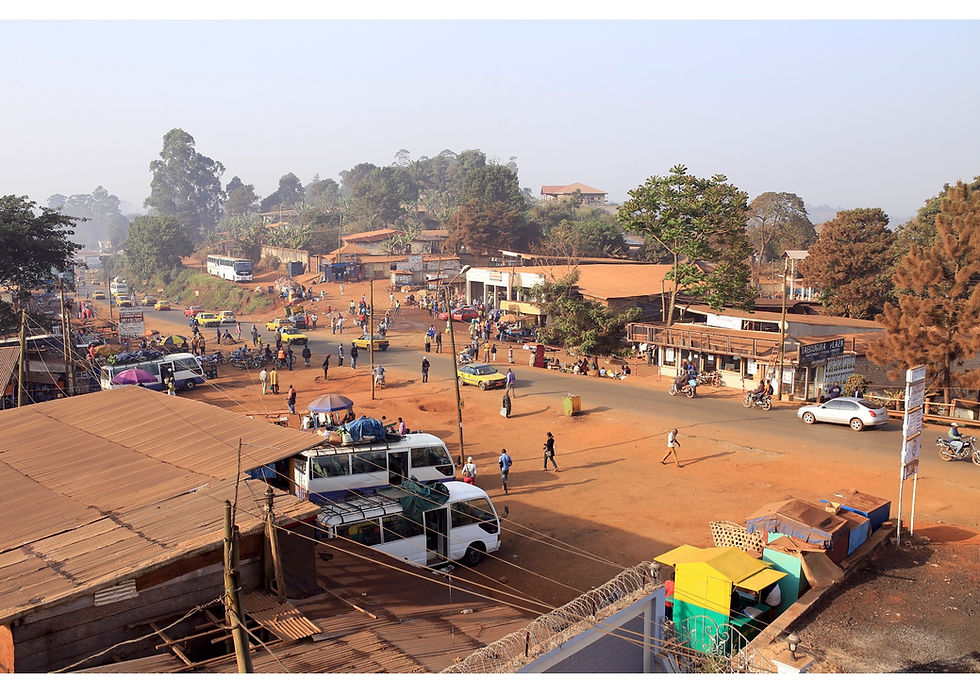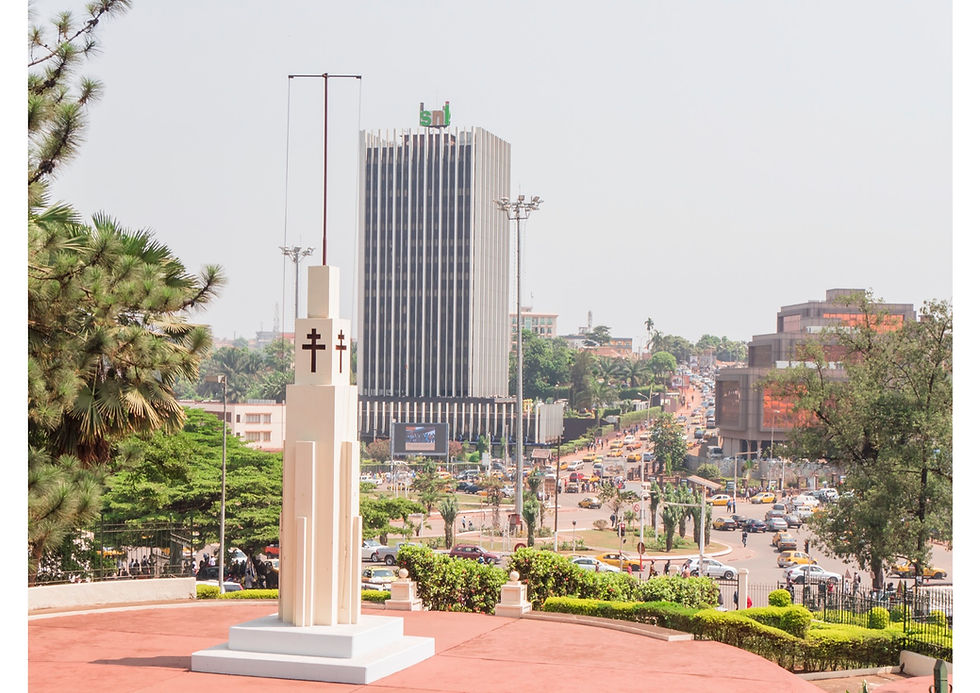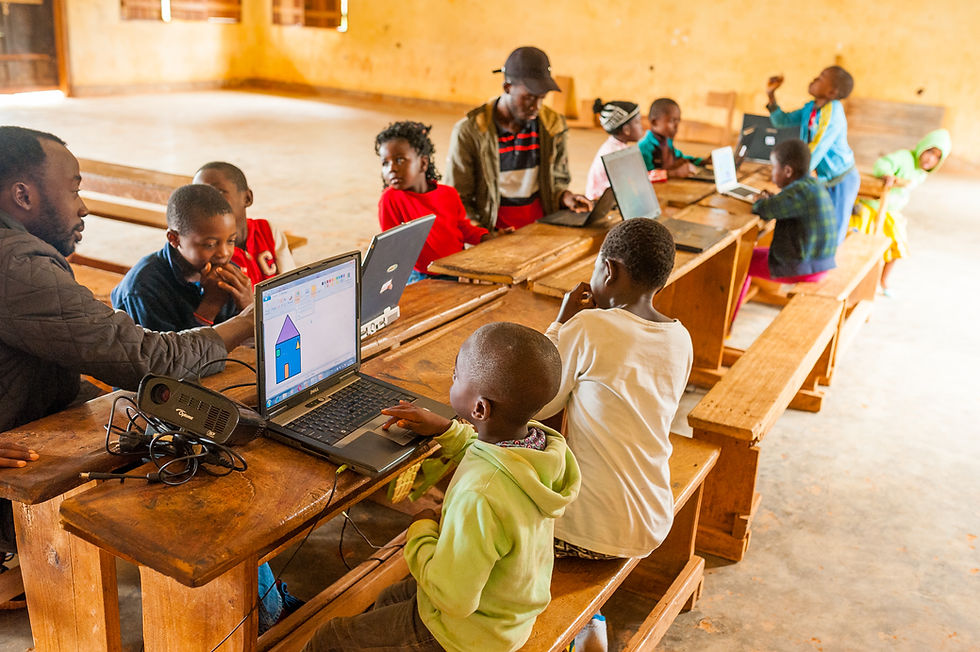The importance of Education in the Eradication of Poverty
- Kristian Latosinski
- Oct 20, 2020
- 6 min read
We’re celebrating the International Day for the Eradication of Poverty this week, which aims to draw attention to the struggles of those in poverty and the actions that can be taken to help end them.
At Children of Cameroon, we believe that ensuring a high standard of education for all children, regardless of circumstance, is one of the most effective of these actions in combating poverty. For this reason, our charity’s mission is to make education accessible for vulnerable children in Cameroon, through donation and sponsorship, in order to end the cycle of poverty they find themselves trapped in.
In the article this week, to honour the International Day for the Eradication of Poverty, we’ll be exploring just how important education is in the fight to break the poverty cycle.
Global poverty: the facts
Global poverty is still, without a doubt, one of the most devastating challenges facing the world today. Since the UN first established the International Day for the Eradication of Poverty on October 17th 1992, the number of people living on less than $1.90 a day worldwide has reduced by over a billion, but as of 2015, there are still 736 million people earning under this amount across the globe.
In 2020, almost four decades after the first International Day for the Eradication of Poverty, these numbers may rise for the first time since its inauguration due to the global pandemic. According to the UN, the effects of COVID-19 on the rates of poverty could put a stop to their plans to eliminate poverty by 2030 and could reduce this work by a decade, with predictions of up to an extra 420-580 million people falling into poverty once again. Extreme worldwide poverty in 2020 is far from being a problem of the past.
Smaller, fragile and conflict-affected countries like Cameroon, the UN states, are often the locations with the highest rates of poverty. People in these nations are often at a higher risk of experiencing dangerous work and living conditions. In addition, they often have a lack of access to healthcare, nutrition, justice and education. Many find it difficult to escape such conditions, with several generations living in a similar, entrapped situation with no clear sight of their basic rights. But, if the young can manage to gain access to one of these rights, a high quality education, they are given the chance to break free of this self-perpetuating cycle of poverty.

How can education help to eradicate poverty?
Perhaps the most fundamental way that education helps to break the poverty cycle is in the knowledge and skills that children learn when they have access to it, which can then go on to help them gain employment in highly-skilled and salaried jobs. Even a seemingly small exposure to education can improve a child’s future exponentially. A UNESCO report predicts that if all students in low-income countries left school with nothing more than basic reading skills, 171 million people could break free of poverty. It was further found that for every year in education, children increase their earnings in work by 10% when they leave school.
This, of course, can be life changing for the individual, helping them to escape poverty themselves. But, the effects that one child completing an education and gaining valuable employment can have on families and communities can also be limitless. It can end generational poverty in individual families, helping to raise a family out of a self-perpetuating cycle of poverty and allowing them to benefit from a higher level of education, healthcare and nutrition. They are supplied access to a brighter future.
When an individual gains higher-skilled employment, they also raise others indirectly out of poverty. They not only contribute to the economies of their local community and country (an average extra year of post-secondary education in sub-Saharan Africa would increase long-term GDP by 16%), but inspire those around them to strive for a better life too. A solid foundation of education can help to give hope, both to an individual who is in the system and to those around them.

Education, poverty and gender inequality: all poverty is not equal
Just as poverty is a primary cause of inequality, inequality can be found between those in poverty. Gender, particularly, has a profound impact on poverty rates. On average, there are 122 women living in poverty between the ages of 25 and 34 for every 100 men in the same age range and around 700 million fewer women than men are in paid work.
Often, this is due to women in impoverished communities being marginalised and forced into traditional gendered roles. Globally, women perform twice as much unpaid care work as men and in poor rural areas of countries such as Cameroon, early pregnancy and teenage marriage is rife. A UNICEF report in 2014 found that over 31% of girls in Cameroon were married before the age of 18. While the act of women and girls being forced into these positions can lead to a severe discrepancy in educational equality as well as equality in poverty (70% of girls are illiterate in Cameroon), when girls do gain an access to an education, one that provides an equal learning experience regardless of gender, the impact can be life-changing.
Spending only one year in primary school can raise the wages of a girl by 20% when they leave school and a single year in secondary school can increase their wages by 25%. Educating women to allow them to enter the workforce not only provides a vast boost to their country and community’s economy when they gain employment, but is also more likely to end the poverty cycle for the woman’s family: UNESCO found that women invest up to 90% of their income into their family, compared to only 30-40% for men.
Similarly, providing a girl with a gender-equal education can reduce child marriage and birth rate and, by the ripple effect caused by education, help to provide girls with a community that allows them equal opportunities and a future free from the cycle of poverty.

Education reduces risk, danger and poverty
Some of the most profound factors that result in poverty are danger and risk-based, whether it is to do with a lack of access to healthcare, the effects of environmental degradation or conflict. As with the issues surrounding gender, education and poverty, many of the factors that put impoverished children in danger keep them in poverty and prevent them from attending school, despite an education being a primary solution to the problem.
Children in extreme poverty are less likely to have access to healthcare and more likely to attend schools with poor hygiene facilities, as well as having little education regarding disease. This means they are more likely to contract illnesses, preventing them from accessing education. Similarly, extreme weather incidents and conflicts in impoverished countries put them in danger and prevent them from attending schools. In particular, education is central to Cameroon’s primary conflict, the Anglophone Crisis, forcing teachers, children and families to flee anglophone regions of Cameroon or risk having their homes burned down and their lives threatened.
Despite these challenges putting the lives of children and their families in danger and denying them access to schooling, education is the best way of tackling them. An educated and connected community is less likely to engage in conflict and more likely to engage in practices that put their health and wellbeing first.
Education can also help those in poverty reduce environmental degradation and therefore the disasters, risk and impoverishment that come as a result of it. It is predicted that natural disasters and reduced agricultural output due to climate change could lead to 122 million people falling into poverty by 2030. A high quality of education would allow graduates to progress into highly-skilled roles in growing environmentally-focused industries or simply learn how to use land sustainably in agricultural work. With the theme of this year’s International Day for the Eradication of Poverty focused on ‘achieving environmental and social justice for all’, providing vulnerable children with an education could provide a better future, not only for their communities, but their planet too.

If you’d like to help in the fight to eradicate poverty for children in Cameroon through education, visit our sponsorship and donation pages.
Or if you’d like to help us in our mission to change the lives of vulnerable Cameroonian children by volunteering, why not look at our opportunities on our Do-It page?
If you have any questions about our work or education in Cameroon, leave a comment below!




Comments